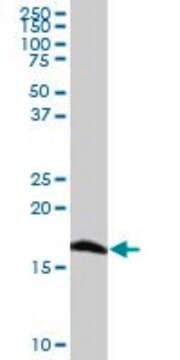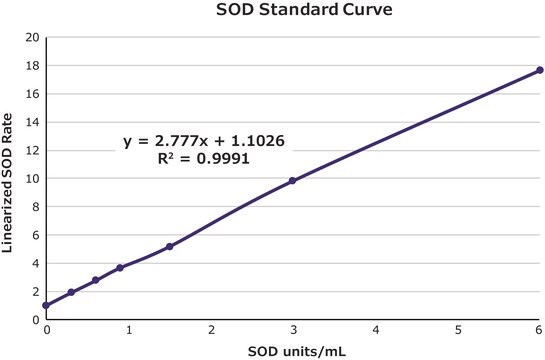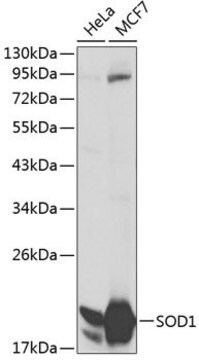Wichtige Dokumente
SAB4200807
Anti-Superoxide Dismutase (SOD) antibody, Mouse monoclonal
clone SD-G6, purified from hybridoma cell culture
Synonym(e):
Cu-Zn, Superoxide dismutase 1, hSod1
About This Item
Empfohlene Produkte
Biologische Quelle
mouse
Antikörperform
purified from hybridoma cell culture
Antikörper-Produkttyp
primary antibodies
Klon
SD-G6, monoclonal
Form
buffered aqueous solution
Speziesreaktivität
human, rat, canine
Verpackung
antibody small pack of 25 μL
Methode(n)
indirect ELISA: 0.3-0.6 μg/mL using 5μg/ml Superoxide Dismutase from human erythrocytes for coating
Isotyp
IgG1
UniProt-Hinterlegungsnummer
Versandbedingung
dry ice
Lagertemp.
−20°C
Posttranslationale Modifikation Target
unmodified
Angaben zum Gen
human ... SOD1(6647)
Verwandte Kategorien
Allgemeine Beschreibung
Immunogen
Anwendung
Physikalische Form
Sonstige Hinweise
Sie haben nicht das passende Produkt gefunden?
Probieren Sie unser Produkt-Auswahlhilfe. aus.
Lagerklassenschlüssel
12 - Non Combustible Liquids
WGK
nwg
Flammpunkt (°F)
Not applicable
Flammpunkt (°C)
Not applicable
Hier finden Sie alle aktuellen Versionen:
Analysenzertifikate (COA)
Die passende Version wird nicht angezeigt?
Wenn Sie eine bestimmte Version benötigen, können Sie anhand der Lot- oder Chargennummer nach einem spezifischen Zertifikat suchen.
Besitzen Sie dieses Produkt bereits?
In der Dokumentenbibliothek finden Sie die Dokumentation zu den Produkten, die Sie kürzlich erworben haben.
Global Trade Item Number
| SKU | GTIN |
|---|---|
| SAB4200807-100UL | 4061838045652 |
| SAB4200807-25UL | 4061838045669 |
Unser Team von Wissenschaftlern verfügt über Erfahrung in allen Forschungsbereichen einschließlich Life Science, Materialwissenschaften, chemischer Synthese, Chromatographie, Analytik und vielen mehr..
Setzen Sie sich mit dem technischen Dienst in Verbindung.







